
In Lesson 2 you will focus your attention on Ukrainian vocabulary associated with morning activities and personal grooming. Cases will be presented in the following contexts:
1) Locative – after the preposition у/в, in relation to rooms of a house
2) Vocative – a review of the case and cultural features which guide its use
3) Nominative – as related to telling time, using terms for minutes and seconds
4) Instrumental – an introduction to use of the case without the preposition з (із, зі)
Ну, й що? So what?
Нарешті! Finally!
|
Іменники: Місцевий відмінок
|
You will recall that the Locative Case is used to indicate a stationary location. In Dialogue 14, you heard that Olenka and Taras were in certain locations in the house.
 |
У тексті ми чуємо: |
Хто в лазничці?
|
 |
|
А я чекаю в коридорі.
|
 |
|
Remember that endings for masculine, feminine and neuter nouns change as follows in the Locative Case:
Чоловічий рід
коридор – у коридорі |
Жіночий рід
кухня – у кухні
лазничка – у лазничці* |
Середній рід
місто – у місті |
* Note the change in this particular ending.
|
Іменники: Кличний відмінок
|
You were introduced to the Vocative Case in e-mova: Core Ukrainian 10. Although the information presented here is very familiar to you, it is a good idea to review endings every now and then. Recall that by changing the ending of someone’s name according to this case pattern, that person knows that he/she is being addressed!
Name ending in: |
|
Name ending in: |
|
Consonant changes to ‘е’
Note the exception ------------ |
Мирон – Мироне!
Іван – Іване!
Петрик – Петрику! |
а changes to ‘о’ |
Калина – Калино!
Лариса – Ларисо!
Оксана – Оксано! |
Vowel о changes to ‘е’
Note the exception ------------ |
Павло – Павле! Дмитро – Дмитре!
Марко – Марку! |
я changes to ‘ю’ |
Соня – Соню! Катруся – Катрусю!
Олеся – Олесю! |
Soft endings such as ій, ь change to ‘ю --- ’
Note the exception ------------ |
Андрій – Андрію! Василь – Василю!
Микола – Миколо! |
ія changes to ‘іє’ |
Марія – Маріє! Надія – Надіє!
Софія – Софіє! |
 |
Note: The Vocative Case is a distinguishing feature of the Ukrainian language. Other Slavic languages (such as Belorussian and Russian) do not use it. |
The exercise which follows reviews both the Locative and Vocative Cases.
XIV. Exercise 2.i
Зразок:
(Тереса, Марко) Тересо! Марку! Де ви?
(кухня, вітальня) Я в кухні, а Марко у вітальні.
1. (Василь, Марія) ___________________________________________
(умивальня, їдальня) _______________________________________
2. (Віра, Максим) _____________________________________________
(хата, надвір) ______________________________________________
3. (Ірина, Анастасія) _________________________________________
(спальня, вітальні) ___________________________________________
4. (Данило, Юрій) ____________________________________________
(коридор, лазничка) ________________________________________
5. (Едвард, Вікторія) _________________________________________
(театр, хата) _____________________________________________
XIV. Exercise 2.ii
Complete the exercise by following the example given . Choose any location to answer the question.
Зразок: |
|
|
Це Михайло. |
Добридень, Михайле! |
|
Де він тепер? |
Він тепер у місті.
|
1. |
Це пан Дмитрик. |
____________________________________________ |
|
Де він тепер? |
____________________________________________
|
2. |
Це Галина. |
____________________________________________ |
|
Де вона тепер? |
____________________________________________
|
3. |
Це Ромко. |
____________________________________________ |
|
Де він тепер? |
____________________________________________
|
4. |
Це Максим. |
____________________________________________ |
|
Де він тепер? |
___________________________________________
|
5. |
Це Катруся. |
____________________________________________ |
|
Де вона тепер? |
____________________________________________
|
6. |
Це пані Мельничук. |
____________________________________________ |
|
Де вона тепер? |
____________________________________________
|
7. |
Це Надія. |
____________________________________________ |
|
Де вона тепер? |
__________________________________________
|
8. |
Це Юрій. |
____________________________________________ |
|
Де він тепер? |
___________________________________________
|
9. |
Це панна Коваль. |
____________________________________________ |
|
Де вона тепер? |
___________________________________________
|
10. |
Це пан Король. |
____________________________________________ |
|
Де він тепер? |
___________________________________________ |
|
Відмінки: Називний відмінок
|
In the previous Unit, you were introduced to vocabulary used to tell time on the hour. When relating the hour, the Nominative Case is used. Review your knowledge of telling time by completing the exercise below.
Exercise 2.iii

|

|

|
1. Тепер перша година. |
2. __________________ |
3. __________________ |
|
|
|
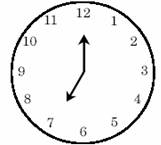
|

|
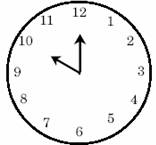
|
4. __________________ |
5. __________________ |
6. __________________ |
|
|
|
|
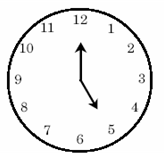
|
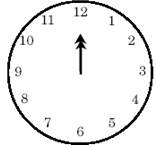
|
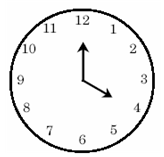
|
7. __________________ |
8. __________________ |
9. __________________ |
|
|
|
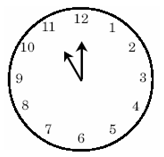
|
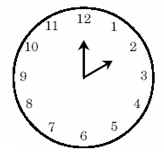
|
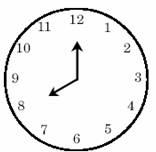
|
10. _________________ |
11. _________________ |
12. _________________ |
|
|
|
 |
У тексті ми чуємо: |
Оленко, ти там уже півгодини!
|
 |
|
In Dialogue 14, you were presented with a new term півгодини, an adverb of time which means “half an hour”, or thirty minutes. To relate this back to what you already know about time, study the information below.
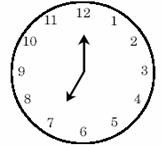
|
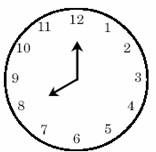
|
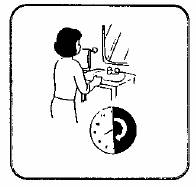 |
Це сьома година, а це восьма година.
одна година = 60 хвилин
|
Це півгодини.
півгодини = 30 хвилин |
When you want to talk about a certain number of minutes or seconds, it becomes important to use the terms хвилина (minute) and секунда (second). Think back to what you already know about using masculine nouns with numbers. You’ll recall that the nouns change their endings, depending on the number being used.
Чоловічий рід: 1 (один) долар, квиток, цент
2, 3, 4 (два, три, чотири) долари, квитки, центи
5, 6, 7... (п’ять, шість, сім...) доларів, квитків, центів
You now have the opportunity to extend your knowledge to feminine and neuter nouns, as follows:
Жіночий рід: 1 (одна) хвилина, секунда, карта
2, 3, 4 (дві, три, чотири) хвилини, секунди, карти
5, 6, 7... (п’ять, шість, сім...) хвилин, секунд, карт
Середній рід: 1(одне) яблуко, авто, крісло
2, 3, 4 (два, три, чотири) яблука, авта, крісла
5, 6, 7... (п’ять, шість, сім...) яблук, авт, крісел
Note that for numbers greater than 5, only the stem of feminine and neuter nouns is used. The a and the o endings which distinguish feminine and neuter nouns in singular form are dropped. The exercise below will give you some practise with combinations of numbers and nouns in the Nominative Case.
XIV. Exercise 2.iv
Зразок: 1:00 – 1:45 – Це сорок п’ять хвилин.
1. 3:10 – 3:40 ______________________________________________
2. 12:45 – 12:55 ______________________________________________
3. 4:15 – 4:17 ________________________________________________
4. 9:00 – 9:20 ________________________________________________
5. 10:59:35 – 10:59:50 _________________________________________
6. 1:00 – 5:00 ________________________________________________
7. 7:25 – 8:05 ________________________________________________
8. 11:58 – 12:02 ______________________________________________
9. 6:30 – 7:30 ________________________________________________
10. 8:15:10 – 8:15:30 ___________________________________________
|
Відмінки: Орудний відмінок
|
The dialogue in Unit XIV presents an opportunity to expand your use of the Instrumental Case after certain verbs. These verbs will be presented in Lesson 3. As a preparatory step, let's review what you already know about this Case.
The case is governed by the preposition з (зі, із)
| Чоловічий рід: |
consonant + ом
й ---єм
щ +ем |
|
(Тарас --- з Тарасом)
(Андрій --- з Андрієм)
(борщ --- з борщем) |
| Жіночий рід: |
a --- ою
я --- ею
|
|
(салата --- зі салатою)
(Таня --- з Танею) |
| Середній рід: |
о --- ом
е --- ем
|
|
(Данило --- з Данилом)
(яйце --- з яйцем) |
XIV. Exercise 2.v
Complete the sentences and read them out loud to your instructor. The words which are followed by an asterisk * must be changed slightly in the Instrumental Case.
| 1. |
На обід, я люблю їсти хліб з: |
(масло) ___________________
(ванення) _________________
(салата) __________________
(майонез) _________________
(зупа) ____________________
(кетчуп) __________________
(муштарда) _______________
(огірок*) ___________________ |
| 2. |
В ресторані*, я люблю їсти піцу з:
*ресторан – restaurant |
(м’ясо) ___________________
(сир) _____________________
(ананас) __________________
(шинка) ___________________
(помідор) __________________
(городина) _________________
(садовина) _________________
(перець*) ___________________ |
| 3. |
Я сьогодні йду на вечерю з:
|
(Івась) _______________________
(Адам) ______________________
(Галина) _____________________
(Катерина) ___________________
(Левко) ______________________
(Любомир) ___________________
(Ніна) _______________________
(Руслана) ____________________ |
In this Unit, you will learn that there are instances when the Instrumental Case is used without the preposition (з), although it is implied in the sentence. In English the preposition with always appears when the sentence refers to action accompanied by a person or thing. In Ukrainian, we can omit this preposition when referring to non-living things, but not people. To illustrate, study the following examples:
With what do you eat borshch? I eat borshch with a spoon.
With what do you eat borshch? I eat borshch with sour cream.
With what do you eat meat? I eat meat with a fork and a knife.
With what do you eat meat? I eat meat with potatoes and peas.
Here is how we would say these same sentences in Ukrainian:
| Чим ти їси борщ? Я їм борщ ложкою. |
|
| З чим ти їси борщ? Я їм борщ зі сметаною. |
|
| Чим ти їси м’ясо? Я їм м’ясо виделкою і ножем. |
|
| З чим ти їси м’ясо? Я їм м’ясо з картоплею і горохом. |
|
In English, the preposition with appears in each example. However in Ukrainian, the preposition is omitted in two of the four examples. Why? The key lies in whether an instrument (hence the name Instrumental Case) must be used to perform the function. If there is an actual instrument or utensil which must be used, then the preposition (з) is understood in both the question and the answer.
Чим ти їси борщ? Чим ти їси м’ясо?
Я їм борщ ложкою. Я їм м’ясо виделкою і ножем.
Without the preposition (з), each question immediately implies that you want to know which utensil is needed.
In the second set of examples the questions show that you want to know what is accompanying the borsch or the meat, therefore the preposition (з) is used.
З чим ти їси борщ? З чим ти їси м’ясо?
Я їм борщ зі сметаною. Я їм м’ясо з картоплею і горохом.
When references are made to people, the preposition (з) is always used. As with the second set of examples above, this means that someone is accompanying another person in a particular activity.
With whom do you eat breakfast? I eat breakfast with my sister.
With whom do you play soccer? I play soccer with my friend.
З ким ти снідаєш? З ким ти граєш у футбол?
Я снідаю з моєю сестрою. Я граю у футбол з моїм приятелем.
Remember: If the preposition з is used in the question, it should also appear in the answer.
|
Toiletries |
 |
Many of you use toiletries each day. This is a key: you make use of these items as instruments or utensils of good grooming. These words will require the Instrumental Case without the preposition (з), similar to the examples given above.
*used for personal grooming, but does not take the Instrumental form.
XIV . Exercise 2.vi
Read the following exercise out loud, paying particular attention to the new vocabulary which has just been introduced.
1. |
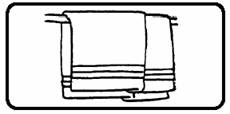
|
Це рушник. |
| Чим можна витиратися? |
| Можна витиратися рушником. |
| |
|
| |
|
|
|
2. |
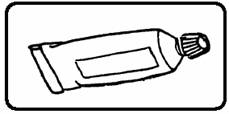
|
Це зубна паста. |
| Чyм можна чистити* зуби? |
Зуби можна чистити зубною пастою.
*чистити – to clean. (Note that in English the phrase is
‘to brush’ one’s teeth while in Ukrainian, the phrase is
‘to clean’ one’s teeth) |
| |
|
| |
|
|
|
3. |
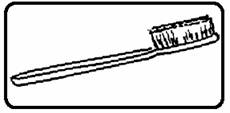
|
Це зубна щітка. |
| Чим можна чистити* зуби? |
Зуби можна чистити зубною щіткою.
|
| |
|
| |
|
|
|
4. |
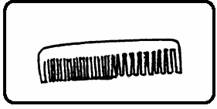
|
Це гребінь. |
| Чим можна зачісуватися? |
| Можна зачісуватися гребенем. |
| |
|
| |
|
|
|
5. |
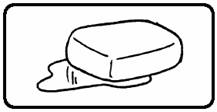
|
Це мило. |
| Чим можна вмиватися? |
| Можна вмиватися милом. |
| |
|
| |
|
|
|
6. |
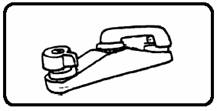
|
Це вода. |
| Чим можна вмиватися? |
| Можна вмиватися водою. |
| |
|
| |
|
|







































